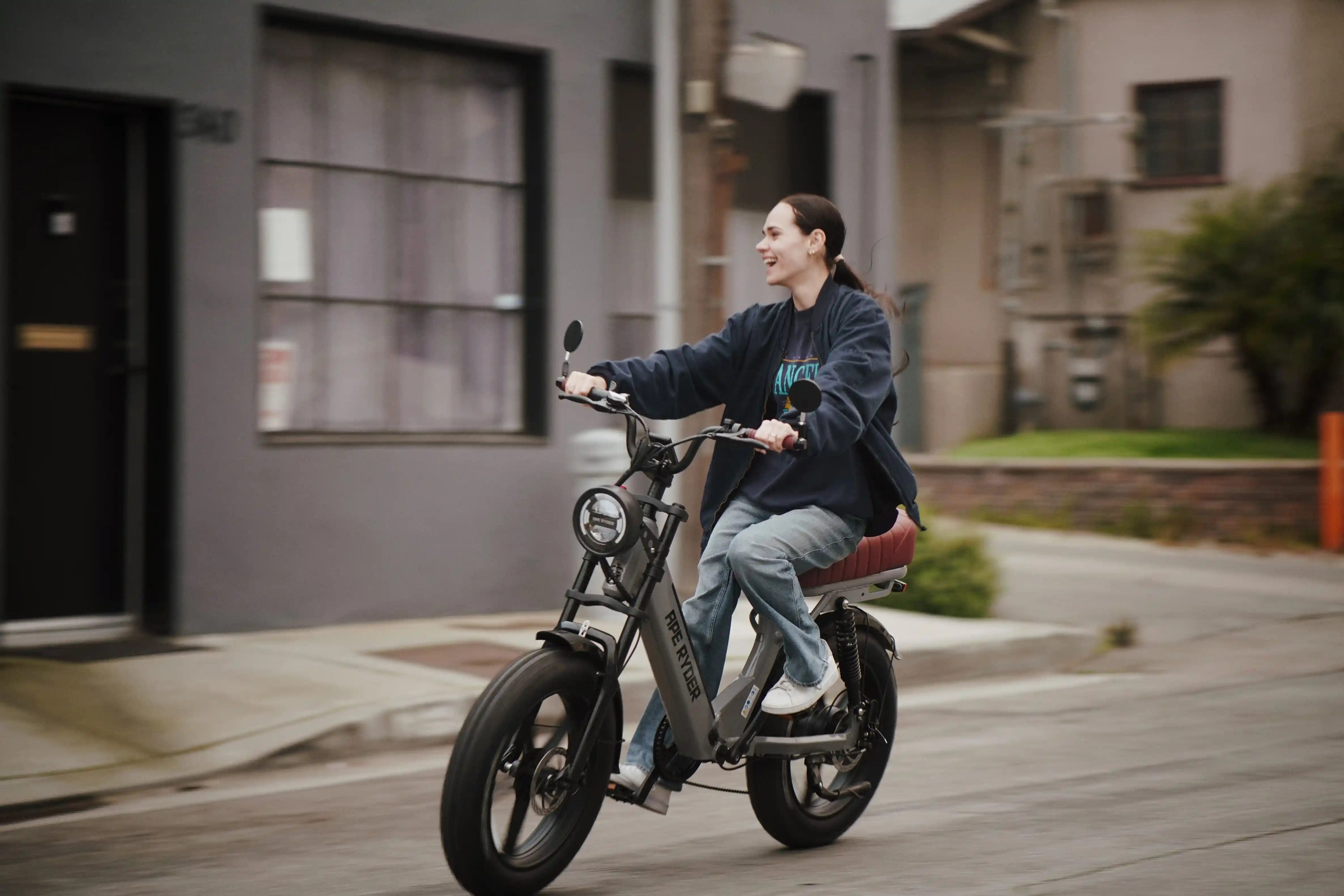Just made the shift to e-biking and would like to maximize your health potential? Sure, an e-bike is a sustainable way of moving about, and it's actually a good workout, too. With urban commutes getting ever more stressful, an e-bike is literally and metaphorically a breath of fresh air. This article covers five actionable tips that will enable you to burn more calories while enjoying your e-bike rides—whether you're an environmental evangelist, tech-savvy, or simply a person who likes to make your daily commute a little more enjoyable. It has got you covered.
Basics of Calorie Burning
Before getting into the tips, let's understand exactly how calorie burning works:. Calories are a measure of energy that your body utilizes for various activities. Each cycling activity burns calories in your body. The more vigorous your activity is, the more calories you will burn. E-bikes provide motorized support, but it's also within your hands how hard you can work while on your ride. It's in this flexibility that lies the magic of maximizing the potential to burn calories.
How Much Calories You Can Burn?
Low Assistance (Minimal Pedal Assist): You can burn around 300-600 calories per hour, similar to riding a conventional bike.
Moderate Assistance: This might reduce the calorie burn to approximately 200-400 calories per hour.
High Assistance: With maximum pedal assistance, the calorie burn could drop to about 100-300 calories per hour.
These numbers are general estimates and can vary based on individual effort and external factors. To get a more precise estimate, using a fitness tracker that monitors heart rate and energy expenditure during the ride can be helpful.
Tip 1: Pedal Assist Wisely
What is Pedal Assist?
One of the beauties of e-bikes is pedal assist—the minute one begins pedaling, it grants electric power. Each ride becomes smooth and pleasurable in its own unique way. Much of the time, there will be low-high levels of assistance, so you can adjust accordingly to your energy levels and terrain under your feet. Using pedal assist wisely will help in striking the perfect balance between effort and ease, enhancing the overall cycling experience.
Start with Lower Assistance Levels
Starting at lower levels of assistance, though, really does pay off when you're first beginning to ride. It makes you rely more on your pedaling power, thus burning more calories and building up strength over time. Another added advantage of starting with less assistive power is that it allows you to get a feel for how much energy you have and adjust your ride accordingly. If you hit steep hills or just start to feel tired, a gradual increase in assist will give you the push needed to continue on without wearing you out. This approach not only guarantees you a good workout but also gives you the ability to have fun on the ride without going through torture.
Mix It Up
Variety is key when it comes to using pedal assist. Do not ride at one level of assistance; alternate between low and high. This variation not only keeps your ride interesting but also mimics interval training, a very well-known technique for effective calorie burning. You can make use of lower assistance on flat terrains where you are able to hold on to the pace and shift to higher levels when you reach really challenging climbs. Add this to your routine, and you'll engage different muscles and keep your body guessing, boosting results of your fitness regime.
Tip 2: Map Out a Mixed Terrain Route
Why You Should Mix It Up?
This often puts one on flat roads, therefore making the ride very monotonous and sometimes not even engaging enough for your muscles. Now, a mixed-terrain route riddled with hills, slopes, and varying surfaces can make your ride much more interesting and calorie-burningly effective. Riding on different kinds of ground stimulates new ways in which your muscles work out, hence it's more comprehensive in nature.
Incorporate Hills
It can greatly increase the level of intensity of your ride when you incorporate some hills along your route. You'll burn a lot more calories because of the effort. And, topping a hill is just so satisfying. Views from a lookout point are a common payoff for effort. Look for scenic rides or visit a hilly section of your area as a weekend outing.
Discover Off-Road Trails
If your e-bike is configured for such adventures, do not hesitate to go on gravel roads, dirt tracks, forest paths, etc. It shall give you challenge and add to the physicality required while riding. After all, many will take you far from the urban cacophony and closer to nature's tranquility. This shall also help further in enhancing your bike control skills, thus making you a more versatile cyclist.
Track Your Progress
Using Fitness Apps
This can be very motivating. You shall learn a lot from your e-bike use. Apps like Strava, MapMyRide and the apps within your e-bike may help to monitor your progress real time. You can track several metrics: distance, speed, altitude ascended, calories burned, and analyze how your efforts are correlating to you gaining fitness.
Set Achievable Goals
Small, realistic goals are a great way to keep yourself motivated during your rides. For example, you can aim to increase that distance by a kilometer each week or focus on improving your speed with each outing along specific sections of your route. Breaking down those larger fitness goals into more readily digestible mini chunk sizes will have you feeling good and thus encourage you to keep on pushing yourself out there further.
Analyze Your Data
Keep constant data on a regular basis, which sort of opens your eyes as to how you are doing. Look for patterns in how you're burning calories, perusing those routes, what time of the day you seem to go best, or which routes yield better records for you. In this regard, you are able to make strategic adjustments to your rides, ensuring that you maximize the calories you burn and increase your levels of fitness. By tracking your achievements, especially towards your goals, it would help to pick out the areas you need to improve on and keep your training fresh.
Tip 4: Engage in Interval Training
What is Interval Training?
One of the most powerful techniques one might use in riding is that of interval training: running through periods of high intensity with periods of low-intensity recovery. This technique has been best known for its great effectiveness in burning calories and making the rides cardio-productive, thereby keeping you bound to your ride.
Apply Interval Training to Your Rides
Now, apply this interval training in e-bike riding by simply pedaling with minimal assistance as hard as possible for some minutes, then cranking up higher assistance levels to recover. For instance, you can pedal intensely for two minutes, really working yourself to the max, then shift to a higher assistance level and cruise for one minute to recover. That can be cycled throughout your ride to build endurance and strength.
Benefits of Interval Training
Add some intervals to your bike ride to keep things interesting. With the variations, not only will you be improving your cardiovascular system, but you will also be increasing your endurance over time. In addition to that, the good effect of this training on your ride extends beyond the training ride; it is proved that due to the increase in metabolic rate, this kind of exercise can make you burn more calories even after the ride.









Leave a comment
All comments are moderated before being published.
This site is protected by hCaptcha and the hCaptcha Privacy Policy and Terms of Service apply.